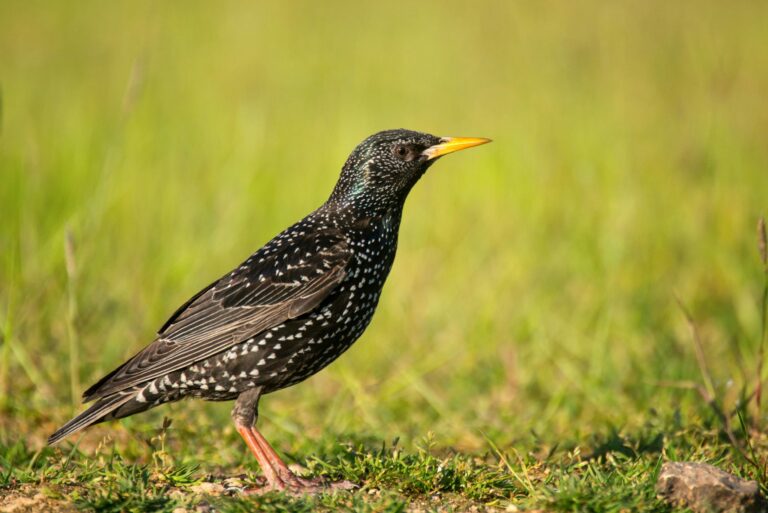Sturnus vulgaris

The starling can reach a body size of up to 23 cm. Its plumage is dark in color, partially iridescent with shades of violet and green, and outside the breeding season, it is adorned with white spots. Sturnus vulgaris inhabits gardens, parks, and forests, with nests built in cavities (Schaefer 2018). The starling is a partial migrant, with some populations migrating and wintering in warmer areas of Europe or Northwestern Africa (Fliege 1984). The breeding season begins in spring, typically in early to mid-April. A clutch usually consists of four to six eggs. The breeding territory is fiercely defended against competitors, and sometimes nests are taken over by other starlings after the breeding period (Bosch 2013).
Diet: The diet of starlings can consist of various components, including insects, spiders, worms, and snails, as well as plant materials such as fruits or seeds (Moeed 1980).
Conservation status: According to the IUCN Red List of Threatened Species, the global status of the starling is “least concern,” but its population trend is decreasing. In Germany, it is classified as “vulnerable” on the Red List of Threatened Species.
-
Bosch, S (2013)Übernahme eines Brutplatzes: Stare Sturnus vulgaris beginnen mit dem Nestbau vor dem Ausfliegen der Jungvögel ihrer Vorgänger. In: Ornithol. Mitt. 65 (9/10), S. 223–230.
-
Fliege, G (1984)Das Zugverhalten des Stars (Sturnus vulgaris) in Europa: Eine Analyse der Ringfunde. In: J. Ornithol. 125 (4), S. 393–446.
-
Moeed, A (1980)Diets of adult and nestling starlings (Sturnus vulgaris) in Hawke’s Bay, New Zealand. In: N. Z. J. Zool. 7 (2), S. 247–256.
-
Schaefer, M (2018)Brohmer – Fauna von Deutschland. Ein Bestimmungsbuch unserer heimischen Tierwelt: Quelle & Meyer Verlag GmbH & Co.